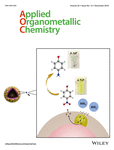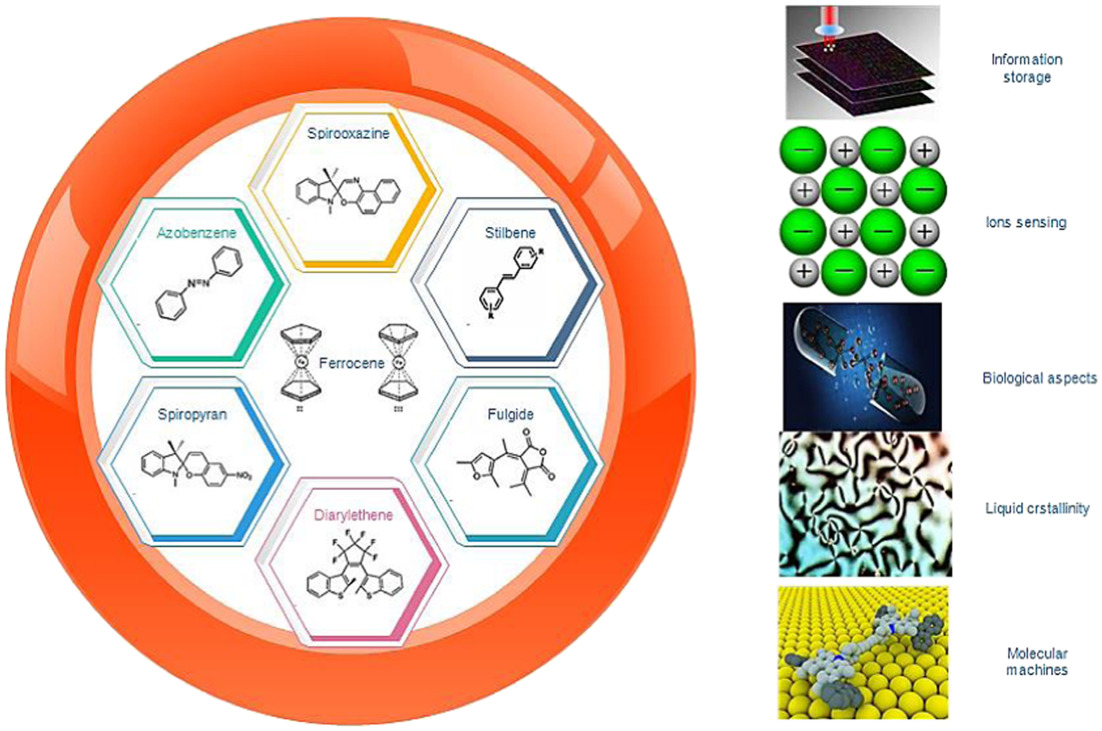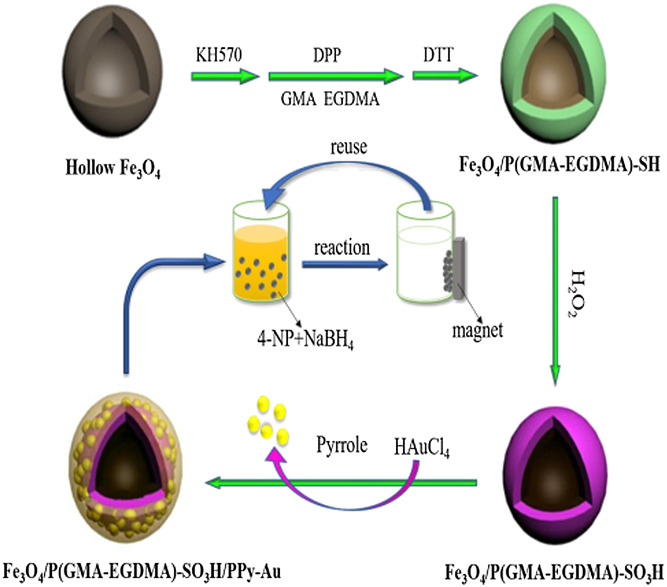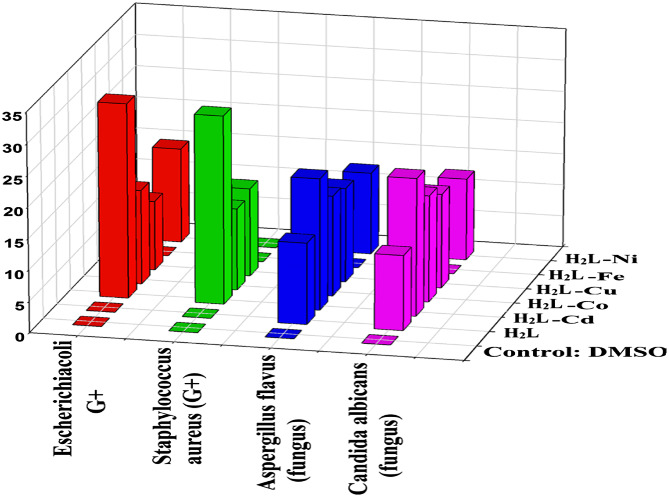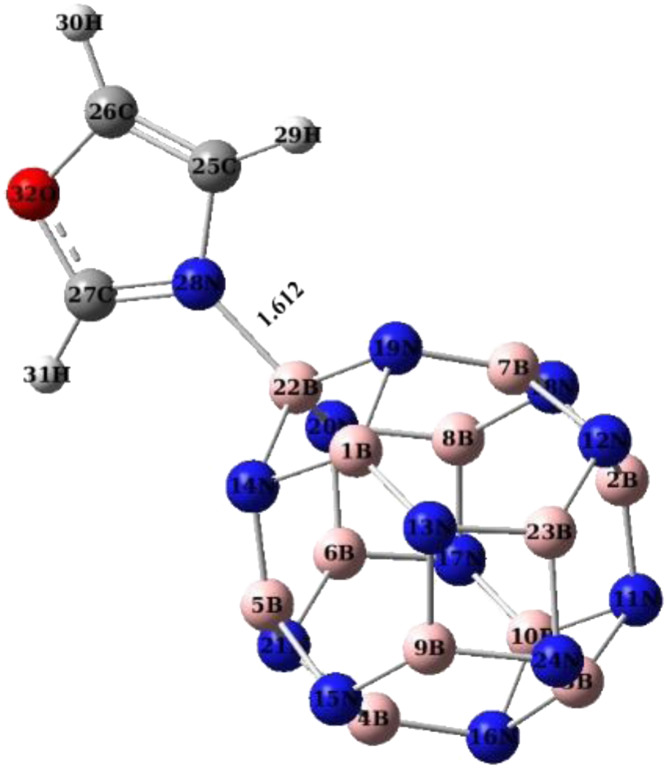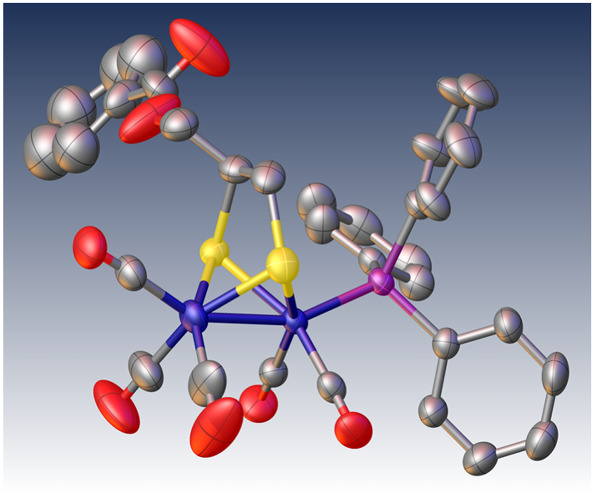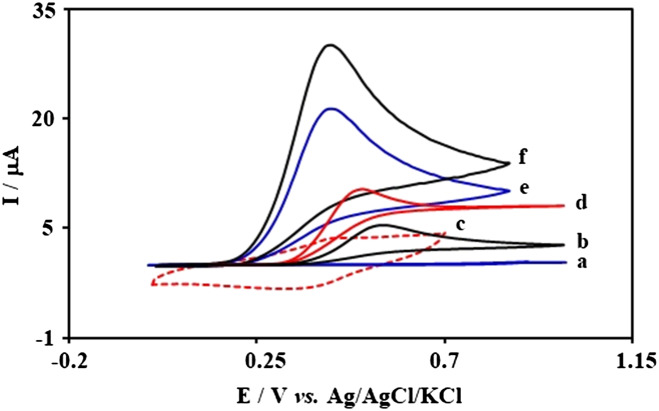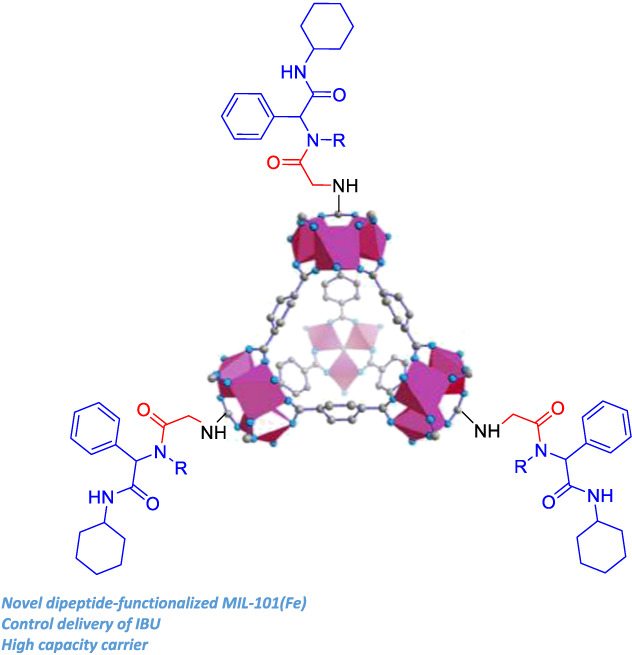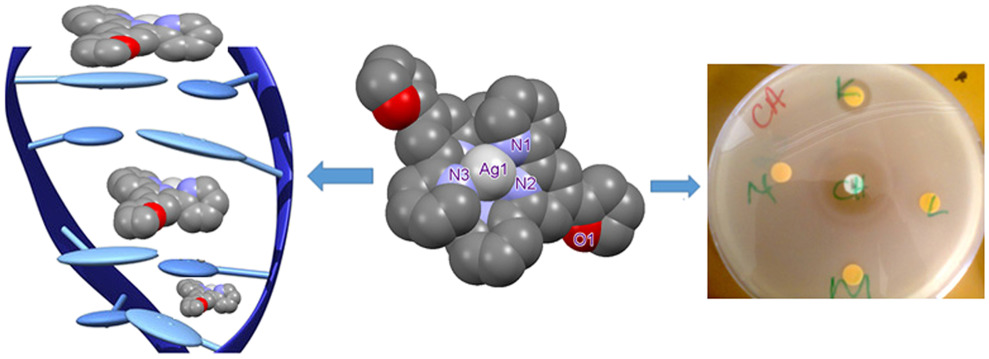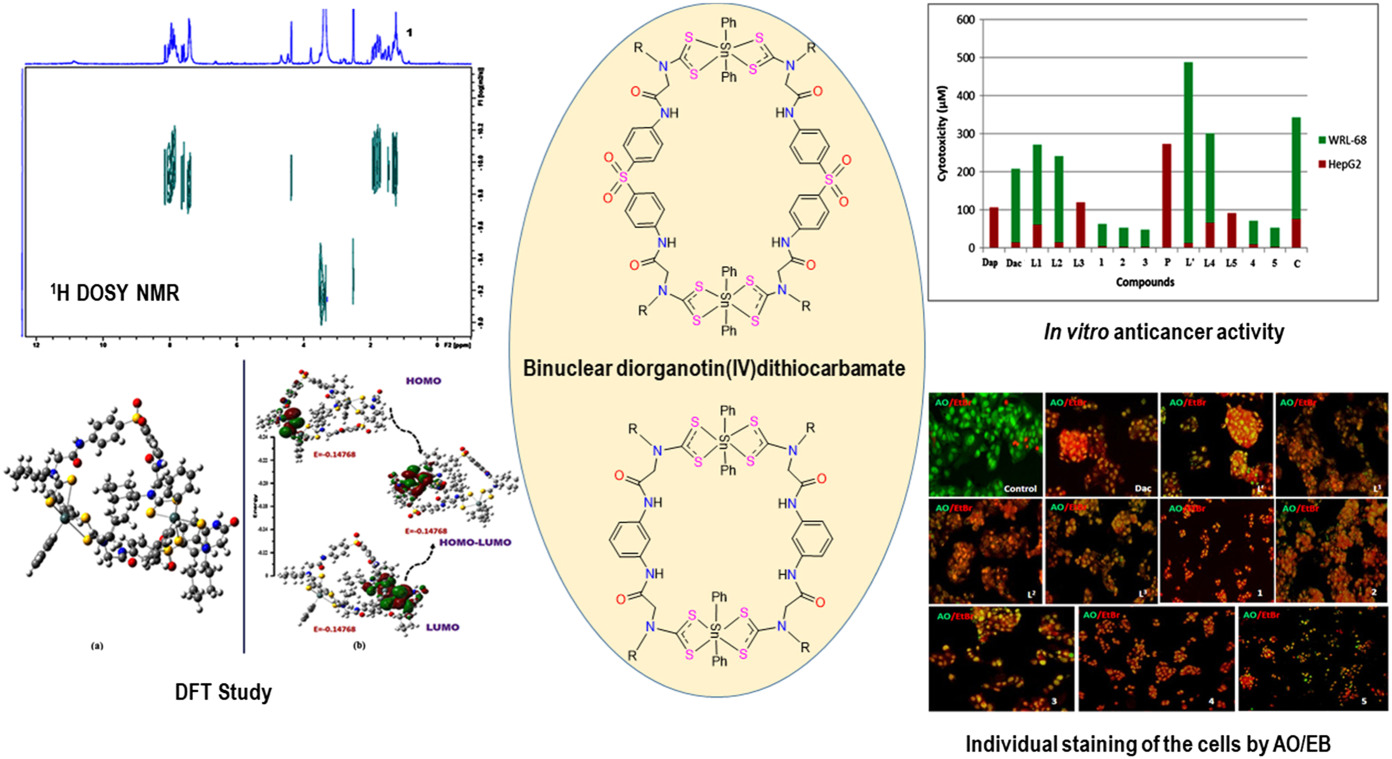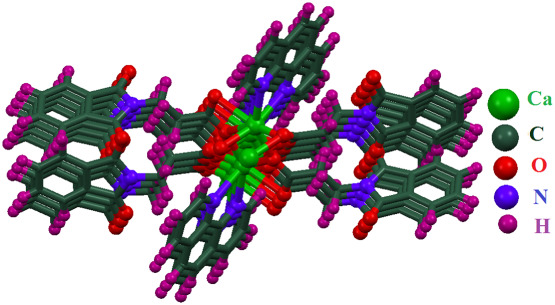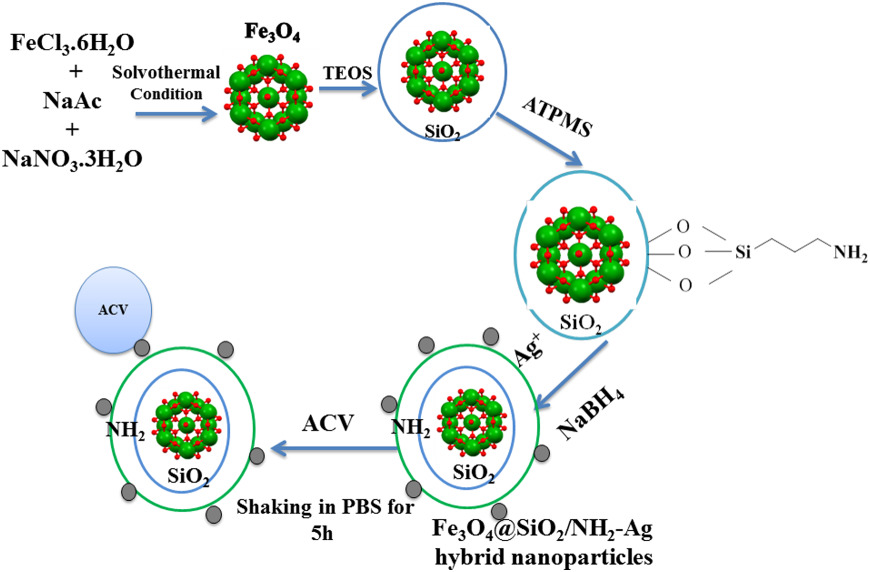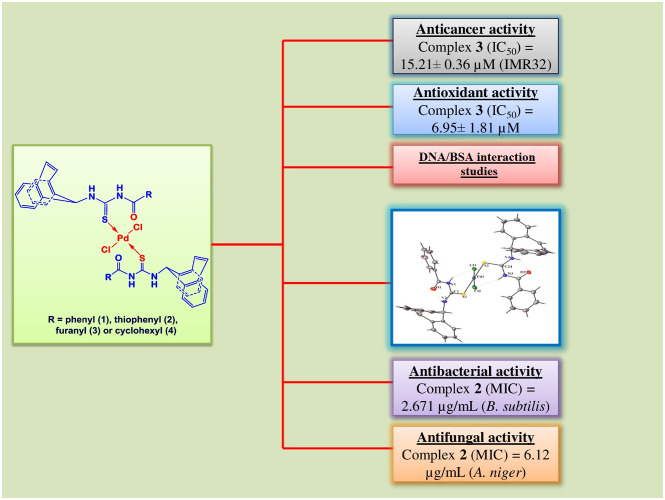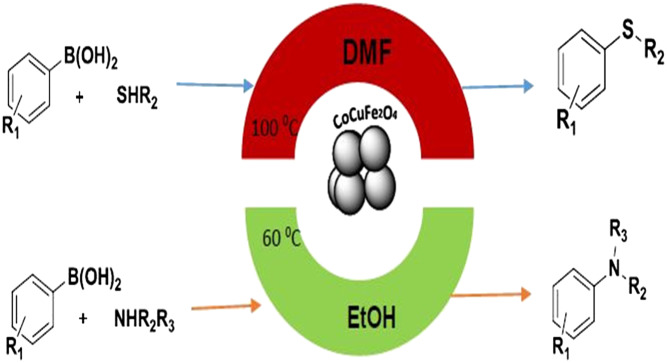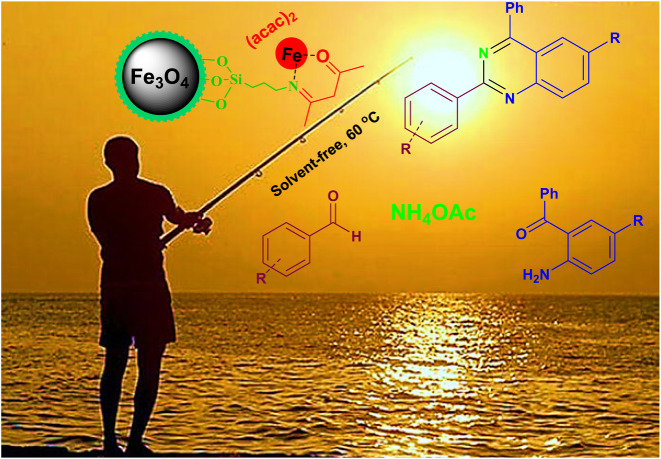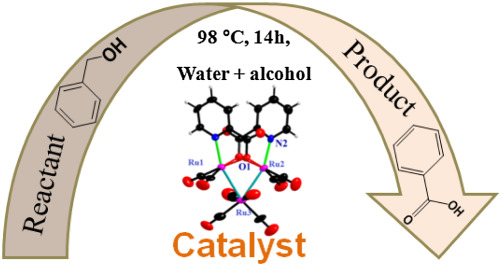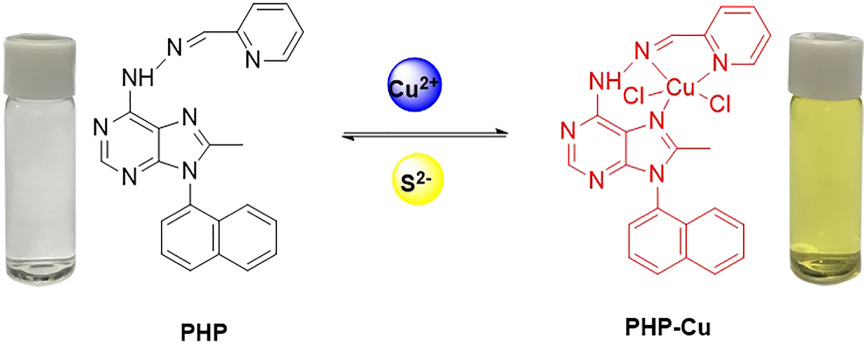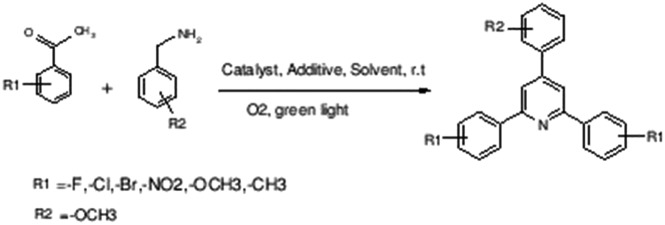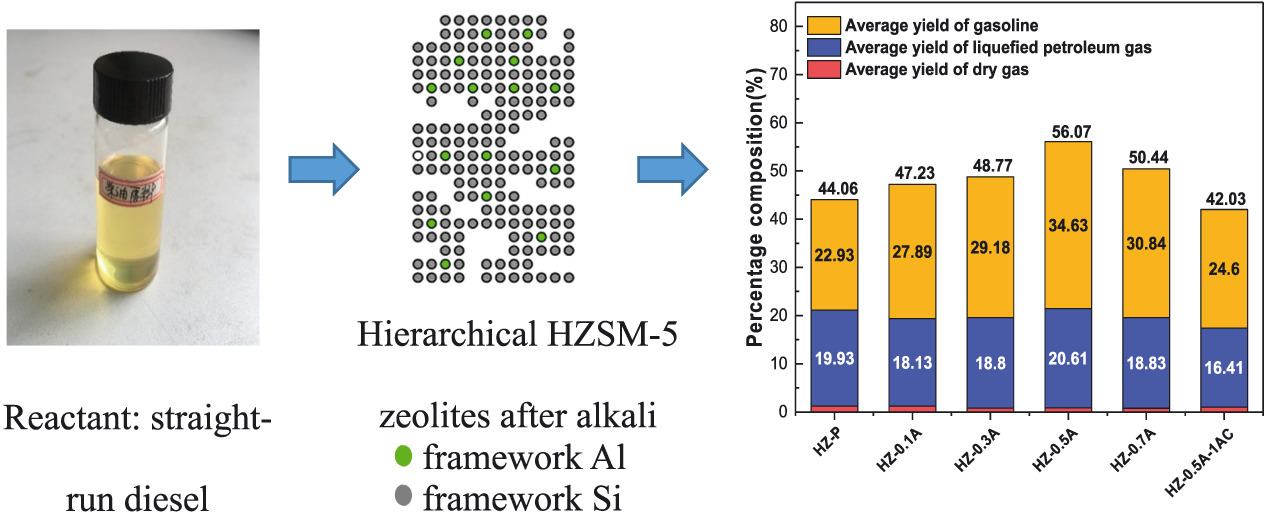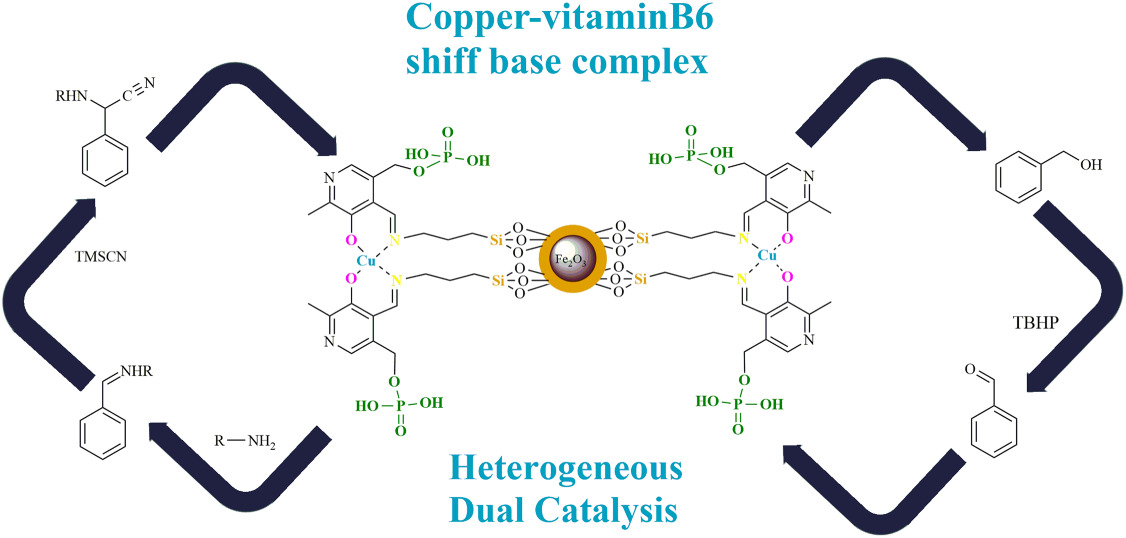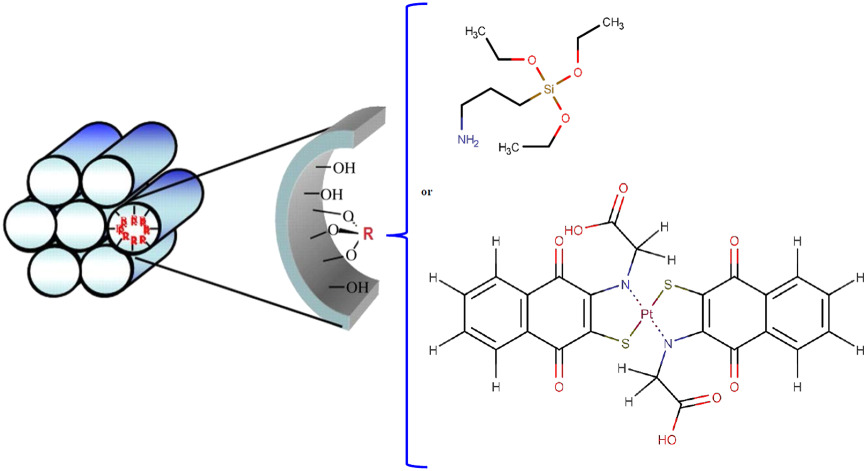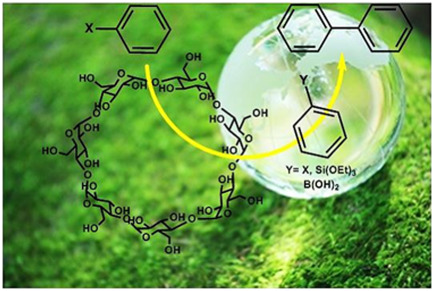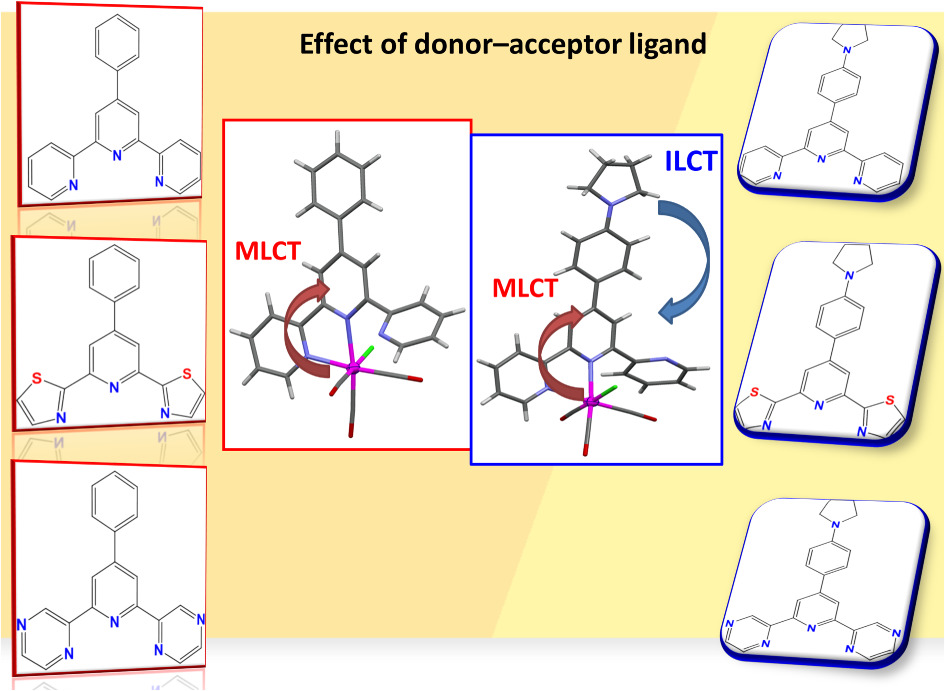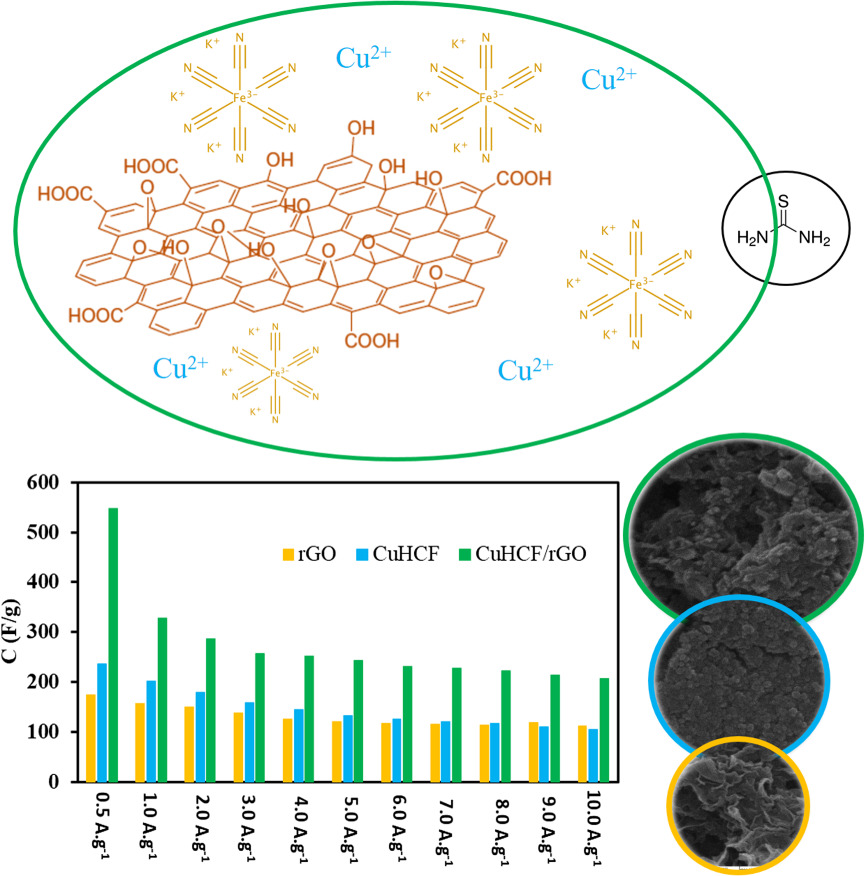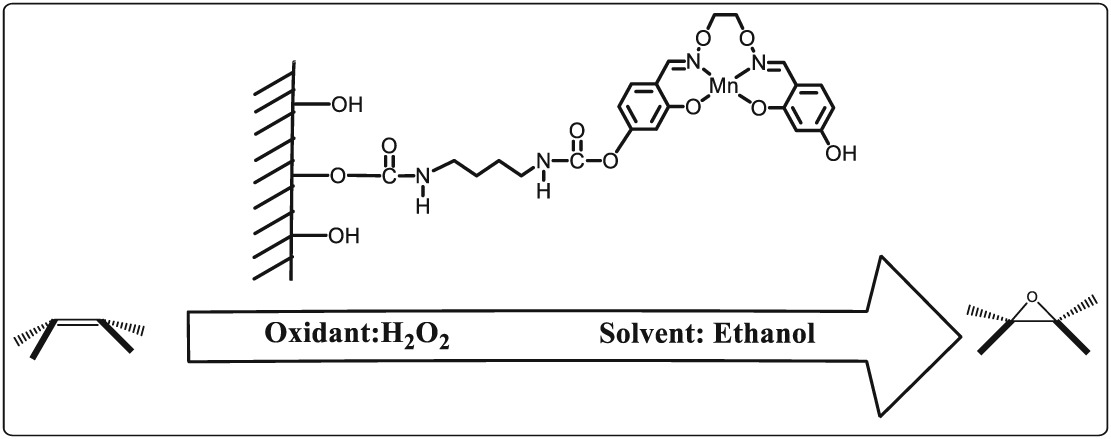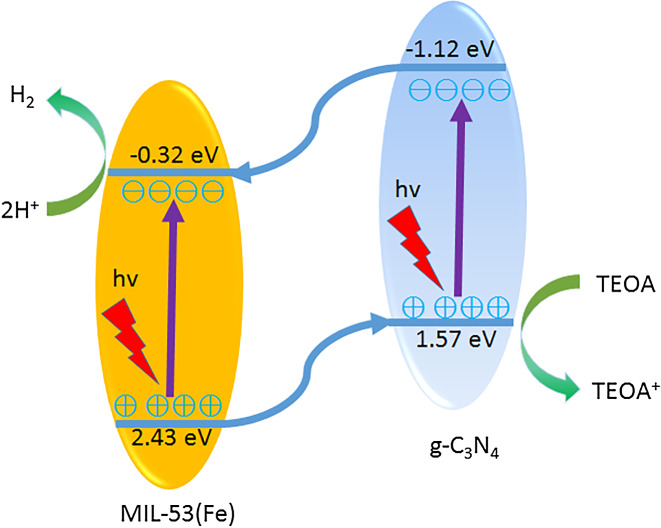Journal list menu
Export Citations
Download PDFs
COVER IMAGE
Cover Image
- Page: i
- First Published: 26 November 2018
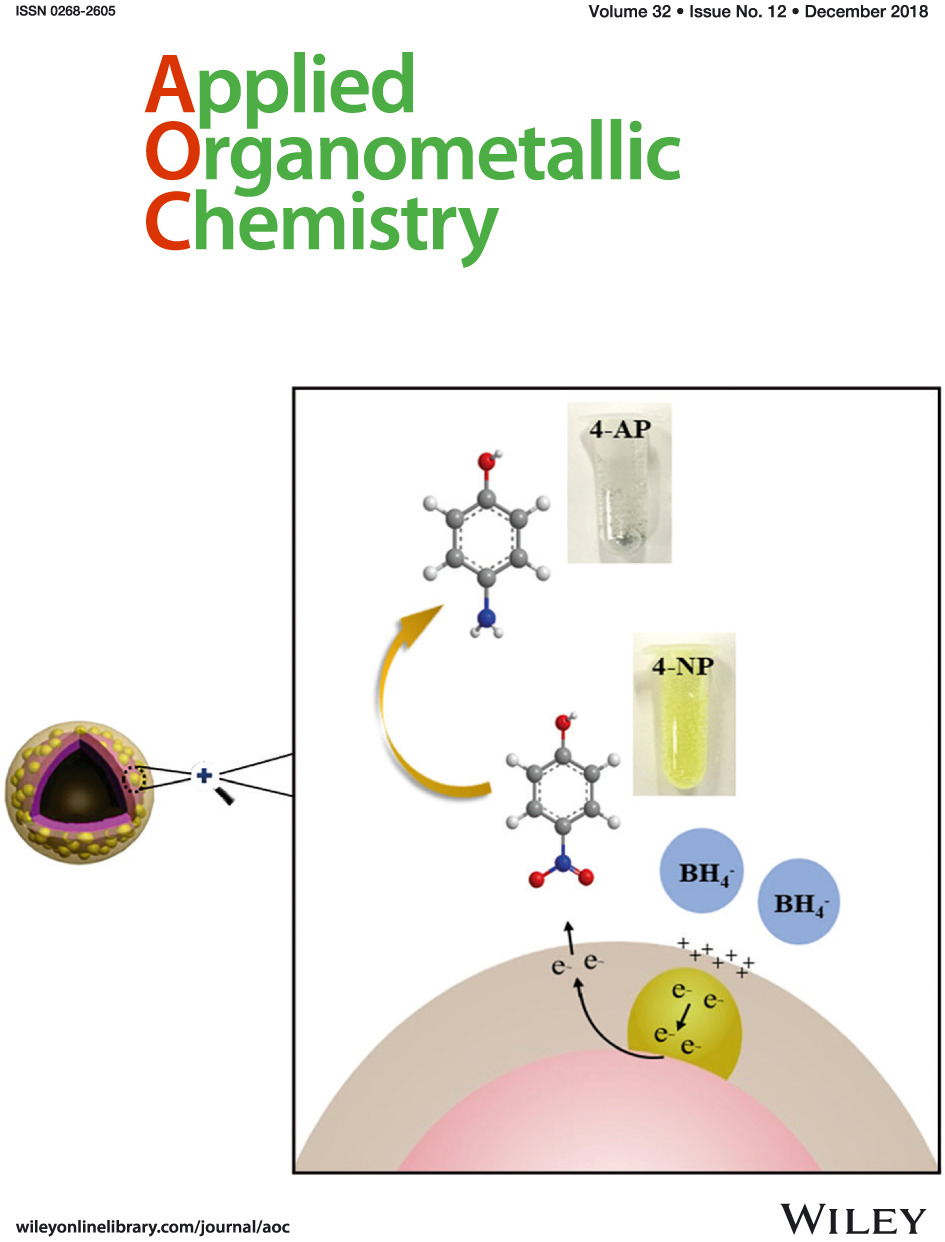
The cover image is based on the Full Paper Preparation and characterization of magnetic hollow Fe3O4/P(GMA-EGDMA)-SO3H/Au-PPy recyclable catalyst for catalytic reduction of 4-nitrophenol by Na An et al., https://doi.org/10.1002/aoc.4739.
ISSUE INFORMATION
REVIEW
Research advances in the synthesis and applications of ferrocene-based electro and photo responsive materials
- First Published: 18 September 2018
FULL PAPERS
Synthesis, theoretical investigations, biocidal screening, DNA binding, in vitro cytotoxicity and molecular docking of novel Cu (II), Pd (II) and Ag (I) complexes of chlorobenzylidene Schiff base: Promising antibiotic and anticancer agents
- First Published: 12 October 2018
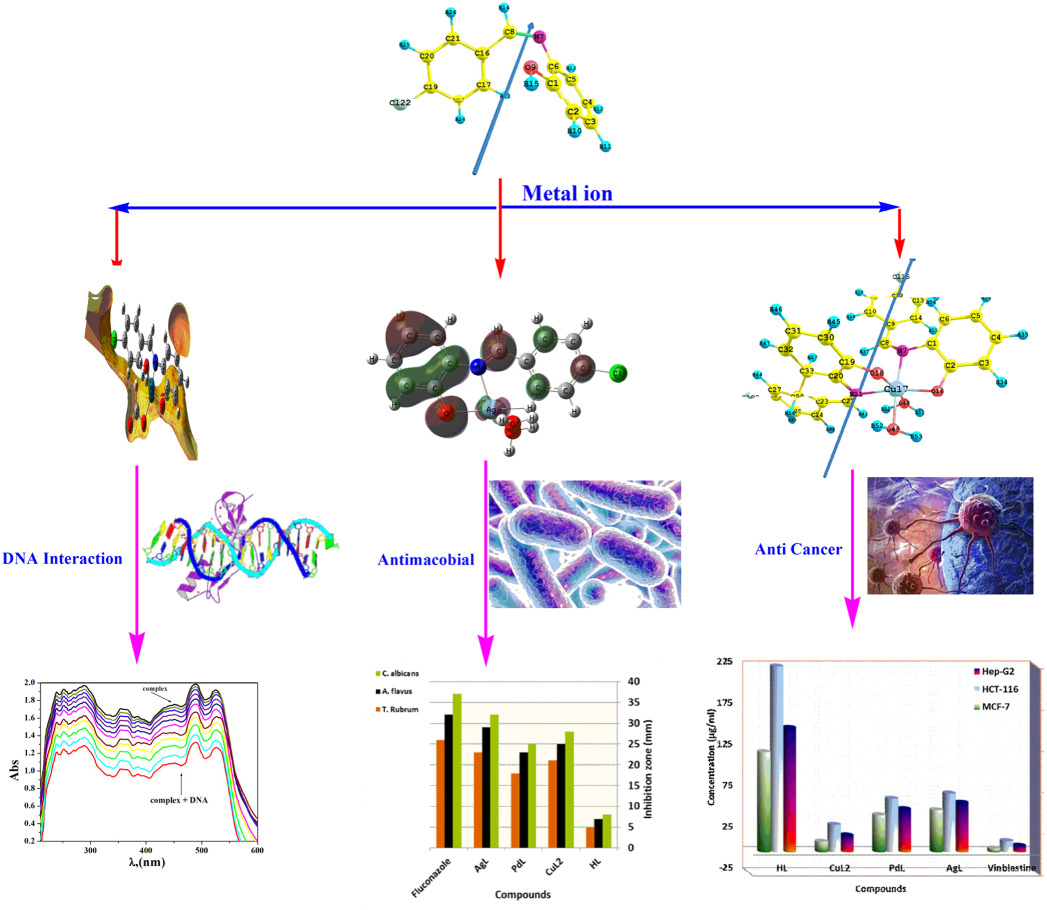
Three new Cu (II), Pd (II) and Ag (I) complexes with bidentate Schiff base ligand 2-[(4-chlorobenzylidene)amino] phenol were synthesized and characterized. The optimized geometry parameters were evaluated and the total energy of HOMO and LUMO, Mullikan atomic charges, dipole moment, orientation and nonlinear optical properties are discussed. The investigated complexes were tested for their antimicrobial and anticancer activities. The obtained results were confirmed by docking and DNA interaction studies.
Preparation and characterization of magnetic hollow Fe3O4/P(GMA-EGDMA)-SO3H/Au-PPy recyclable catalyst for catalytic reduction of 4-nitrophenol
- First Published: 03 October 2018
Synthesis, structural characterization, density functional theory (B3LYP) calculations, thermal behaviour, docking and antimicrobial activity of 4-amino-5-(heptadec-8-en-1-yl)-4H-1,2,4-triazole-3-thiol and its metal chelates
- First Published: 25 October 2018
Synthesis, physicochemical characterization and structural studies of new Schiff base ligand and its metal (II) complexes: In silico molecular docking analysis, antimicrobial activity and cytotoxicity
- First Published: 03 October 2018
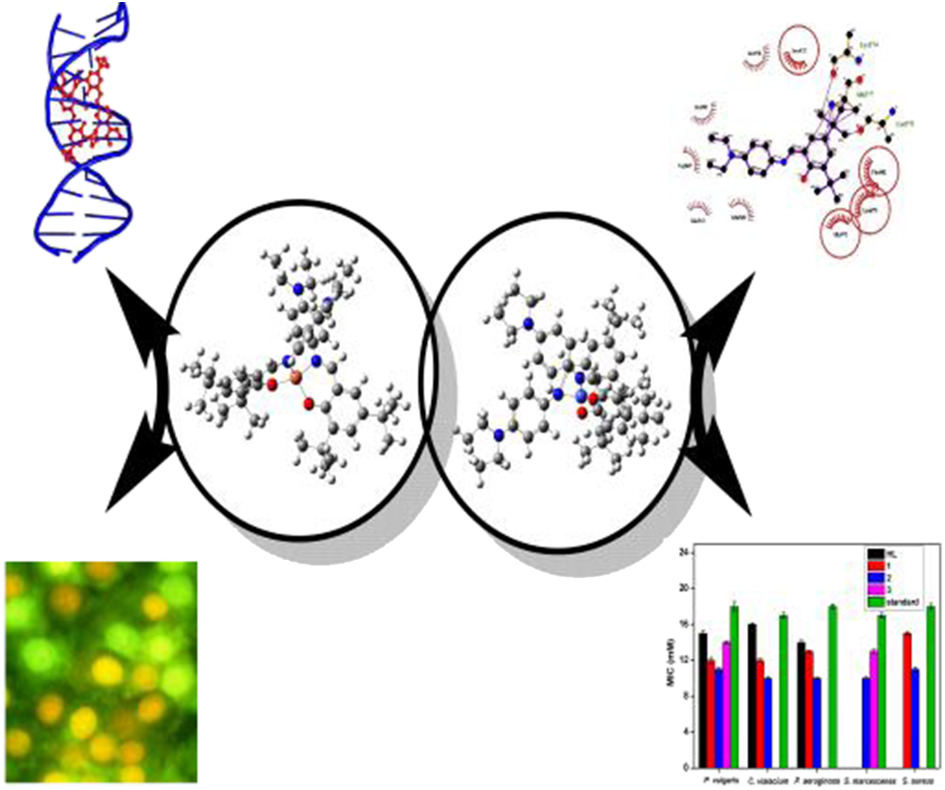
The synthesis and structural characterizations of new Schiff base ligand HL and its metal (II) complexes 1–3 are reported. Complex 1 showed significant binding ability with DNA and complex 2 exhibited greater affinity with HSA. Consequently, complex 2 revealed the highest antimicrobial activity and complex 1 promising cytotoxicity against MCF-7 cancer cells.
Immobilized Cu(II) Schiff base complex supported on Fe3O4 magnetic nanoparticles: A highly efficient and reusable new catalyst for the synthesis of pyranopyridine derivatives
- First Published: 11 October 2018
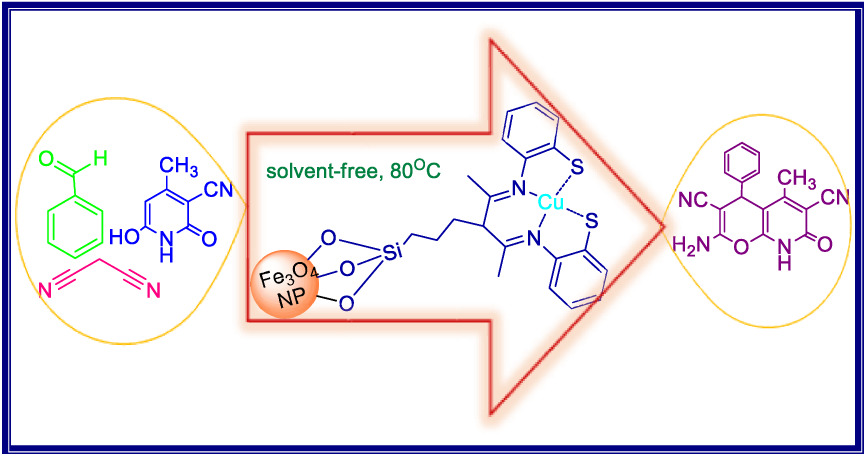
A novel copper(II) Schiff-base complex immobilized on silica-coated nonmagnetic Fe3O4 was synthesized from acetylacetonate (acac) and 2-aminothiophenol (ATP). The catalytic activity of Fe3O4@SiO2-acac-2ATP-Cu(II) nanoparticles was explored in three-component synthesis of pyrano[2,3-b]pyridine derivative under solvent-free conditions.
Probing the adsorption behavior of oxazole and isoxazole heterocyclic compounds onto B12N12 nanocluster surface in gas and aqueous mediums through DFT calculations
- First Published: 03 October 2018
Synthesis, characterization, crystal structure of novel Cu (II), Co (III), Fe (III) and Cr (III) complexes with 2-hydroxybenzaldehyde-4-allyl-S-methylisothiosemicarbazone: Antimicrobial, antioxidant and in vitro antiproliferative activity
- First Published: 09 October 2018
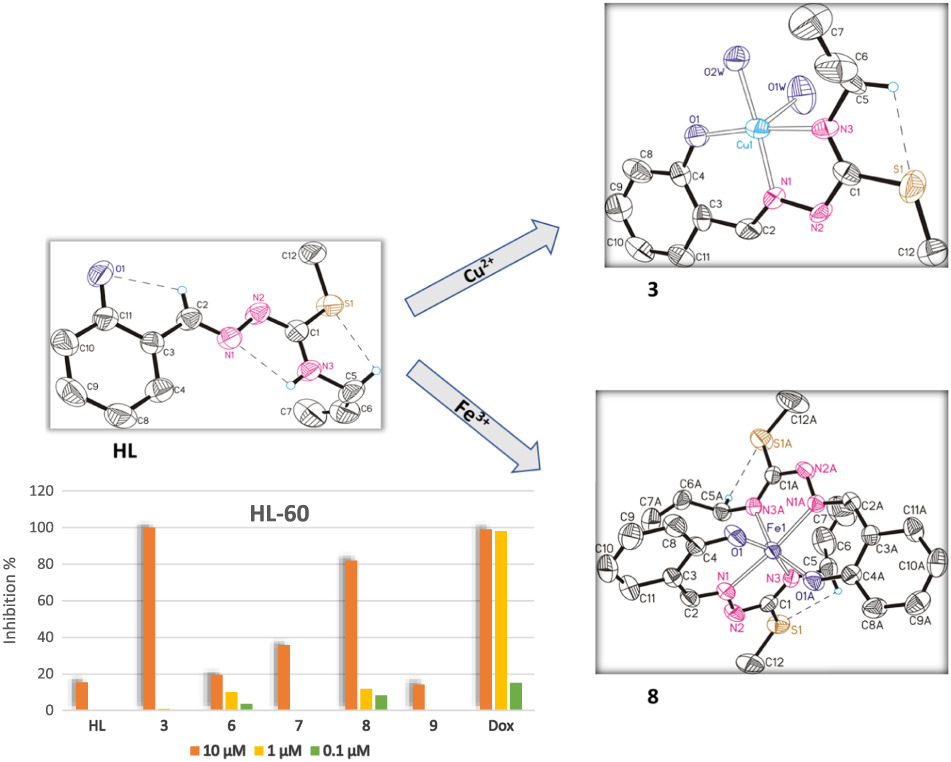
Copper (II), cobalt (III), iron (III), chromium (III) isothiosemicarbazone complexes (1–9) were synthesized and characterized using spectral and single-crystal X-ray diffraction analyses. The Fe (III) complex 8 manifests activity toward HeLa cells and does not destroy normal MDCK cells, which improves its properties in comparison with doxorubicin, applied in practice in medicine. Cr (III), Fe (III) and Co (III) complexes 6–9 manifest high antioxidant activity towards ABTS•+ that exceeds 47–67 times the activity of Trolox.
Heterogenized Cu (II) salen complex grafted on graphene oxide nanosheets as a precursing catalyst for the Pd-free Sonogashira coupling
- First Published: 19 September 2018

- Cu(II) salen complex immobilized on graphene oxide nanosheets (Cu(II) salen@GO) was synthesized with 3-chloropropyltrimethoxysilan as a linker.
- Cu(II) salen@GO as an effective heterogeneous catalyst has been investigated for Pd-free Sonogashira coupling reaction in DMSO with high yield.
- The heterogeneous catalyst was as active as its homogeneous analogue and presented good recoverability and no significant loss in activity within successive runs.
SIMes/PCy3 mixed ligand-coordinated alkyl group-tagged ruthenium indenylidene complexes: Synthesis, characterization and metathesis activity
- First Published: 18 September 2018
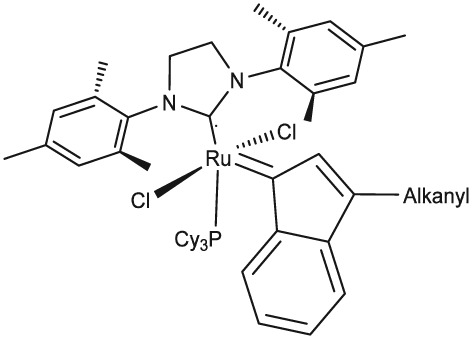
The synthesis and characterization are reported of SIMes/PCy3 mixed ligand-coordinated second-generation ruthenium catalysts, bearing various 3-alkyl-1-indenylidene ligands, denoted as RuCl2(3-alkyl-1-indenylidene)(SIMes)(PCy3), in which alkyl is isopropyl, tert-butyl or cyclohexyl. The catalytic activities of the complexes were evaluated in the olefin metathesis reaction.
Electrocatalytic properties of diiron ethanedithiolate complexes containing benzoate ester
- First Published: 06 September 2018
DNA binding and in vitro anticancer activity of 2-((1H-benzimidazol-2-yl)methylamino)acetic acid and its copper(II) mixed-polypyridyl complexes: Synthesis and crystal structure
- First Published: 03 October 2018
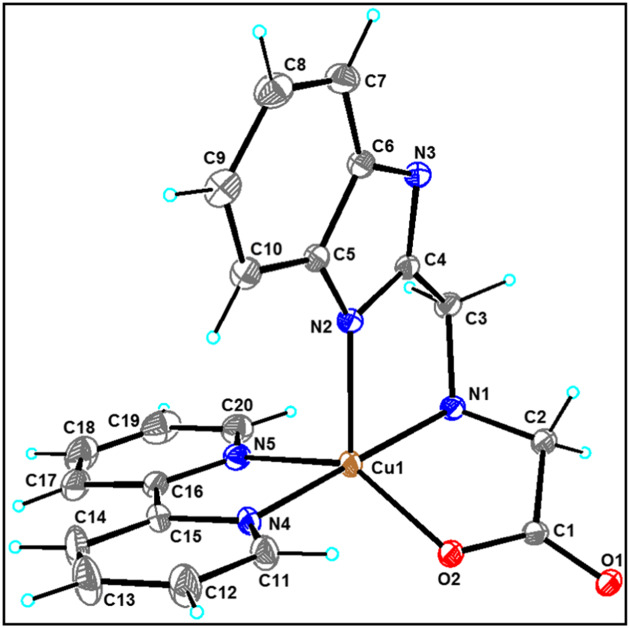
The complex [Cu(BIG)(bpy)]ClO4⋅2H2O was structurally characterized using single-crystal X-ray diffraction. It crystallizes in the monoclinic space group P21/n with four molecules per unit cell. An asymmetric unit of the complex contains complex molecule, perchlorate anion and two water molecules. The copper ion is coordinated to two nitrogen atoms (N1, N2) and carboxylate oxygen atom (O2) of the tridentate primary ligand BIGH and two nitrogen atoms (N4, N5) of bipyridine.
Electrochemical determination of ascorbic acid, uric acid and folic acid using carbon paste electrode modified with novel synthesized ferrocene derivative and core–shell magnetic nanoparticles in aqueous media
- First Published: 25 September 2018
Dipeptide-functionalized MIL-101(Fe) as efficient material for ibuprofen delivery
- First Published: 27 September 2018
Reusable BNPs-SiO2@(CH2)3NHSO3H-catalysed selective oxidation of sulfides to sulfones
- First Published: 07 October 2018

Reusable boehmite nanoparticles–silica–NHSO3H (BNPs-SiO2@(CH2)3NHSO3H) was found to be an efficient heterogeneous nanocatalyst for the selective oxidation of sulfides to sulfones. Excellent yields, easy and quick isolation of products, short reaction times and excellent selectivity are the main advantages of this reaction. The catalyst was characterized using various techniques.
Synthesis, characterization, antimicrobial screening and DNA binding of novel silver(I)–thienylterpyridine and silver(I)–furylterpyridine complexes
- First Published: 18 September 2018
Supported rhodium liquid metal catalysts for the hydroformylation of olefins
- First Published: 18 September 2018
One-pot stepwise reductive amination reaction by N-coordinate sulfonamido-functionalized Ru(II) complexes in water
- First Published: 09 October 2018
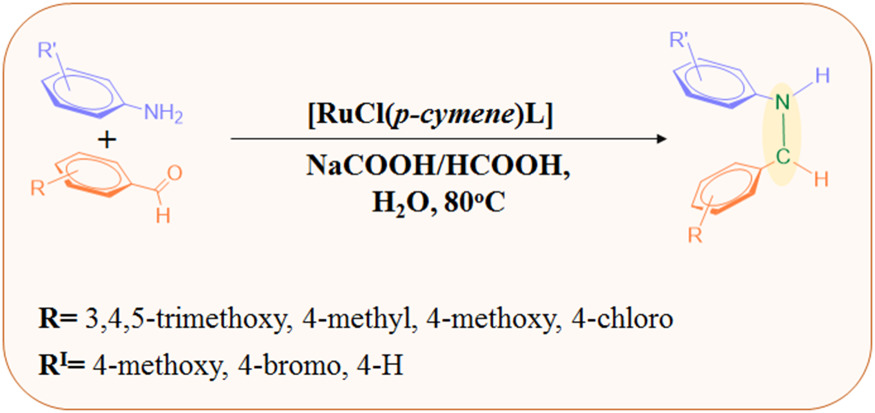
We synthesized [RuCl(p-cymene)(L)] complexes with N-arenesulfonly-o-phenylenediamine ligands and [RuCl2(p-cymene)]2. The complexes were used as catalysts in one-pot stepwise transfer hydrogenative reductive amination reactions of diverse aldehyde and amine derivatives in the presence of NaCOOH/HCOOH with aqueous media.
Binuclear diphenyltin(IV)dithiocarbamate complexes bearing functionalized linkers: Synthesis, spectral characterization, DFT and in vitro anticancer activity
- First Published: 07 October 2018
Synthesis of tetramethylquinoline-2,4-diamine using FeNi3/KCC-1/APTPOSS-supported copper cyclam and salen complex as a reusable catalyst
- First Published: 25 September 2018
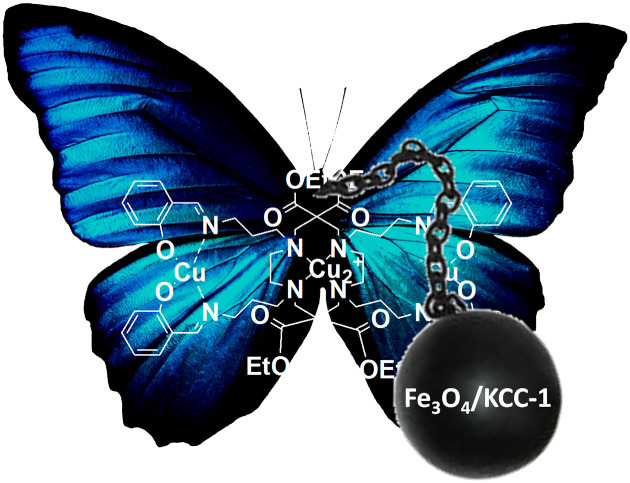
The potential application of an efficient, easily recoverable and reusable magnetically separable FeNi3/KCC-1/APTPOSS nanoparticle-supported Cu(II) cyclam and salen complex catalyst for the synthesis of tetramethylquinoline-2,4-diamine was investigated. The catalyst was thoroughly characterized. The catalyst was utilized in the direct and selective chemical reaction of 1,3-dichlorovinamidinium⋅PF6 with aniline for the synthesis of tetramethylquinoline-2,4-diamine. The recycled catalyst was analysed, the results showing only minor changes in the morphology after the reaction, thus confirming the robustness of the catalyst.
DABCO-modified super-paramagnetic nanoparticles as an efficient and water-compatible catalyst for the synthesis of pyrano[3,2-c:5,6-c']dichromene-6,8-dione derivatives under mild reaction conditions
- First Published: 07 October 2018
![DABCO-modified super-paramagnetic nanoparticles as an efficient and water-compatible catalyst for the synthesis of pyrano[3,2-c:5,6-c']dichromene-6,8-dione derivatives under mild reaction conditions](/cms/asset/17d46f8c-68f5-44f3-affa-482c19b96abd/aoc4561-toc-0001-m.jpg)
A novel catalyst is introduced based on the immobilization of DABCO on magnetic nanoparticles. The catalyst is characterized by various methods, including SEM, VSM, TGA and FT-IR spectroscopy. This catalyst is used for the synthesis of pyrano[3,2-c:5,6-c']dichromene-6,8-dione derivatives. Several starting materials containing electron-donating or electron-withdrawing functionalities were used, and all of them led to the desired products in high isolated yields (19 examples). The catalyst also showed very good reusability in the reaction.
Transition metal complexes containing a tridentate cefadroxil-based Schiff base: An effective paramagnetic semiquinone Ag (I) complex against Staphylococcus aureus and Pseudomonas aeruginosa
- First Published: 07 October 2018
Synthesis, crystal structure and NLO study of two new versatile Ca (II) complexes
- First Published: 03 October 2018
Synthesis and characterization of superparamagnetic nanohybrid Fe3O4/NH2-Ag as an effective carrier for the delivery of acyclovir
- First Published: 18 October 2018
Highly resilient polyethylene elastomers prepared using α-diimine nickel catalyst with highly conjugated backbone
- First Published: 27 September 2018
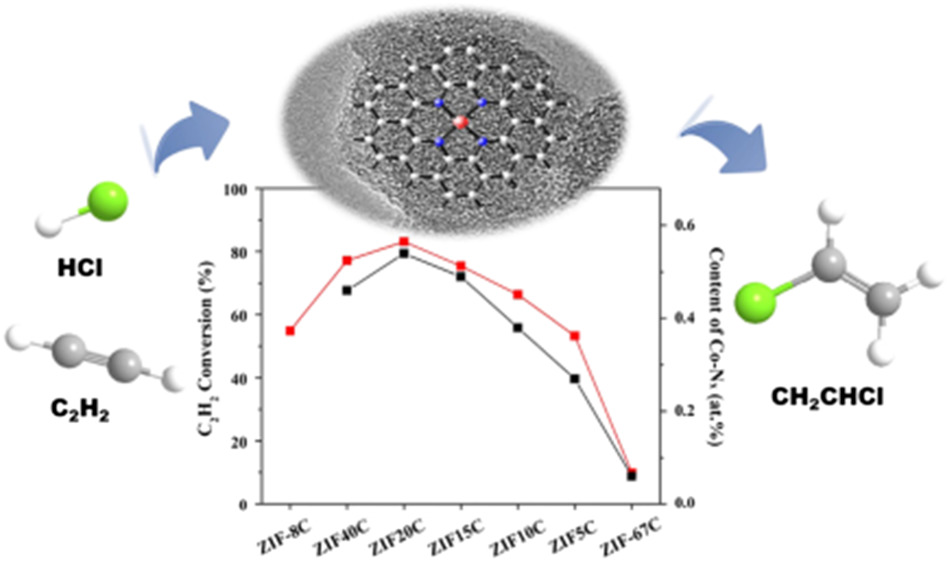
α-Diimine nickel catalyst Cat-1 bearing highly conjugated acenaphthylene backbone is synthesized. Cat-1 can produce polyethylene with both higher molecular weight and higher branch density than that of typical Brookhart catalyst B-Cat due to its twisted aniline moieties. The polyethylene prepared by Cat-1 show excellent mechanical properties and evidently improved elastic resilience as compared with the polymer prepared with B-Cat.
Biological evaluation, DNA/protein-binding aptitude of novel dibenzosuberene appended palladium (II)-thiourea complexes
- First Published: 11 October 2018
Nano CoCuFe2O4-catalyzed coupling reaction of arylboronic acid with amines and thiols: An atom-economic and ligand-free route to access unsymmetrical amines and sulfides
- First Published: 09 October 2018
Metal–organic framework-derived cobalt and nitrogen co-doped porous carbon with four-coordinated Co–Nx for efficient acetylene hydrochlorination
- First Published: 25 October 2018
Two Ho(III) and Co(II) complexes constructed from bis(triazol-1-yl)benzoic acid with structurally similar carboxyl ligands: Syntheses, structures and biological activities
- First Published: 07 October 2018
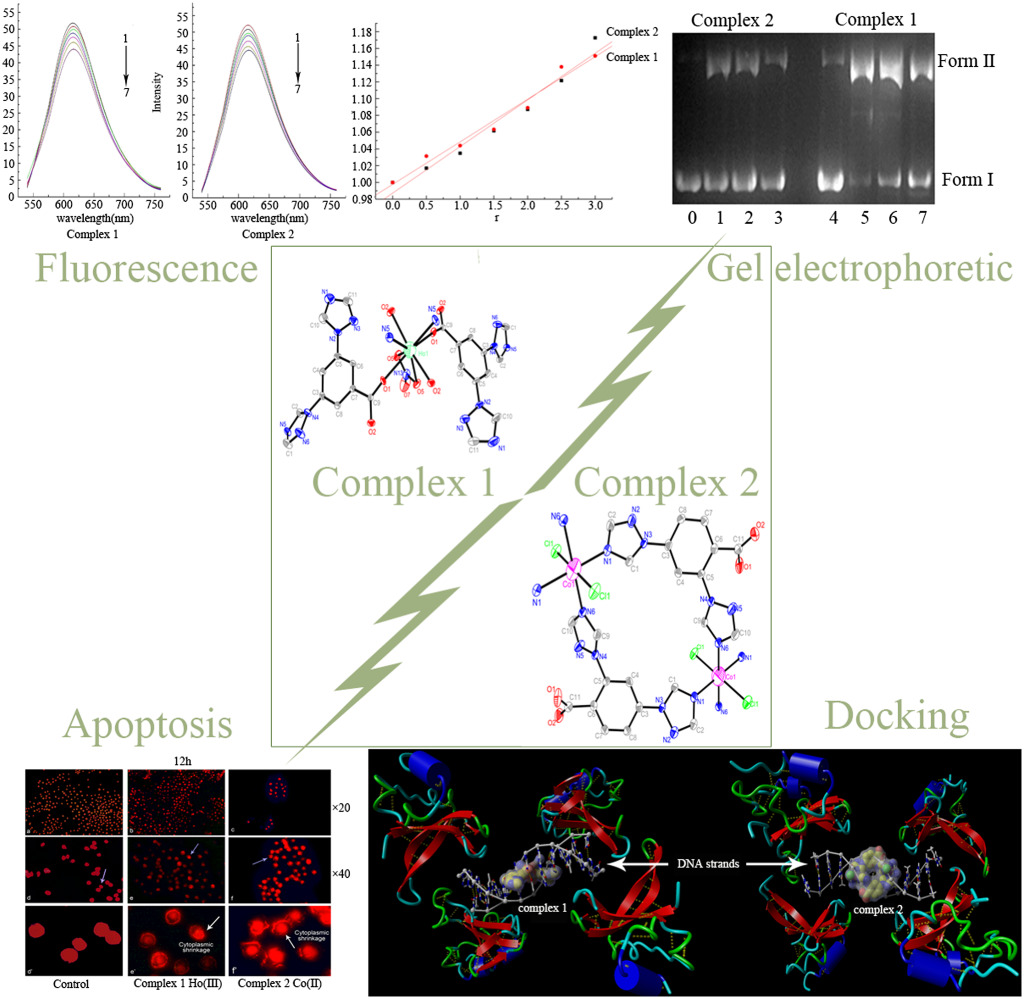
We have synthesized and characterized complexes 1-2, the spectroscopy methods showed that complexes 1 and 2 interaction with DNA in a partial intercalation mode and this result was further verified by docking study. The flow cytometry and morphological analysis showed that the two complexes exhibited apoptosis activity.
Activated carbon-supported cobalt molybdate as a heterogeneous catalyst to activate peroxymonosulfate for removal of organic dyes
- First Published: 01 October 2018

Activated carbon-supported cobalt molybdate (CoMoO4/AC) composite was fabricated conveniently, aiming to create a novel heterogeneous catalyst for activation of peroxymonosulfate to degrade organic dyes. A rational mechanism is proposed based on a non-radical process and free radical process. The enhanced active sites were mainly ascribed to the synergistic effects between Co species and oxygen-containing functional groups (especially ketone groups) on the catalyst surface.
Synthesis of quinazolines over recyclable Fe3O4@SiO2-PrNH2-Fe3+ nanoparticles: A green, efficient, and solvent-free protocol
- First Published: 18 September 2018
Facile oxidation of alcohols to carboxylic acids in basic water medium by employing ruthenium picolinate cluster as an efficient catalyst
- First Published: 03 October 2018
Structural characterizations, spectroscopic, electrochemical properties, and antibacterial activities of copper (II) and cobalt (II) complexes containing imidazole ring
- First Published: 09 October 2018
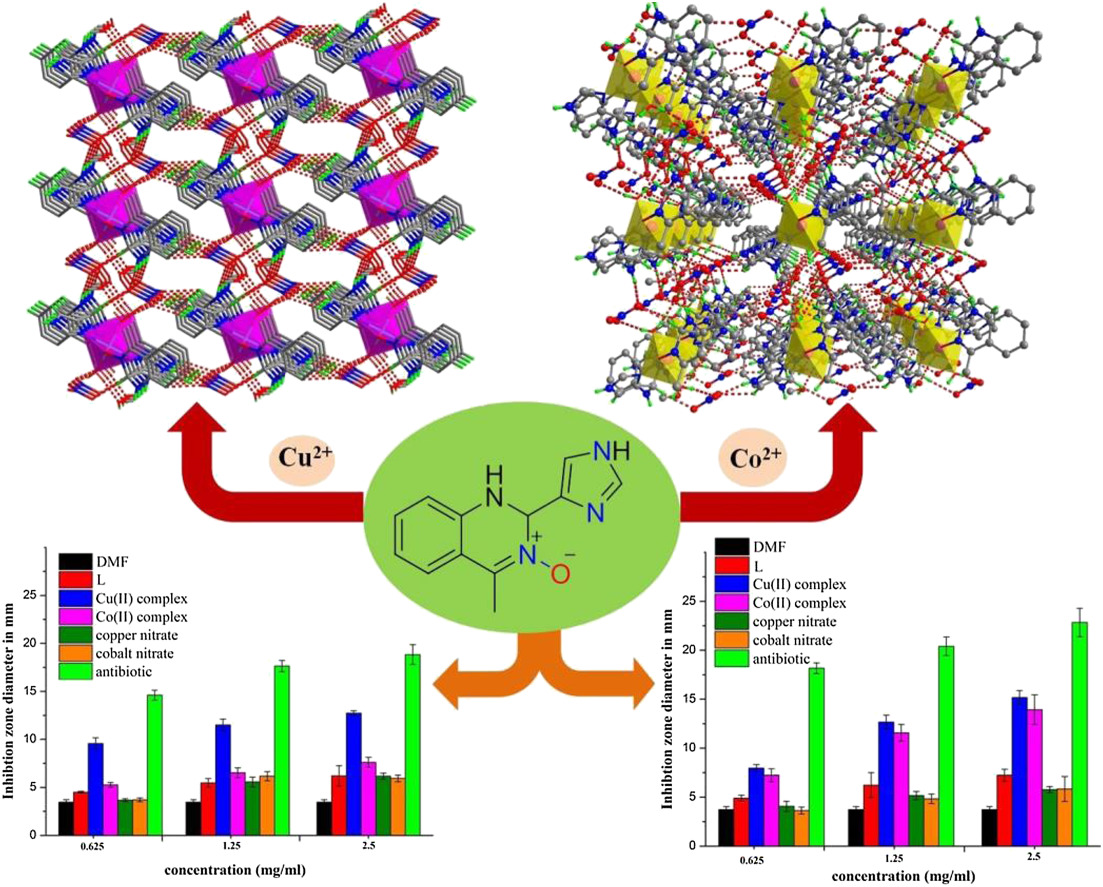
Two 2-D and 3-D supramolecular complexes [M(L)2] (NO3)2•2CH3OH (M = Cu(1) and Co(2), L = 2-(4-imidazolyl)-4-methyl-1,2-quinazoline-N3-oxide), were synthesized and characterized. The spectroscopic data of complexes were compared with L. Both complexes were determined by X-ray single-crysta diffraction and display perfect octahedral geometries. In the crystal structures, complexes 1 and 2 form an infinite 1-D chain-like and 2-D, 3-D supramolecular frameworks. XPS and thermal stability of 2 was investigated. Electrochemical properties and antimicrobial activities of complexes were also studied.
A novel purine derivative-based colorimetric chemosensor for sequential detection of copper ion and sulfide anion
- First Published: 09 October 2018
Cytotoxicity studies, DNA interaction and protein binding of new Al (III), Ga (III) and In (III) complexes with 5-hydroxyflavone
- First Published: 03 October 2018
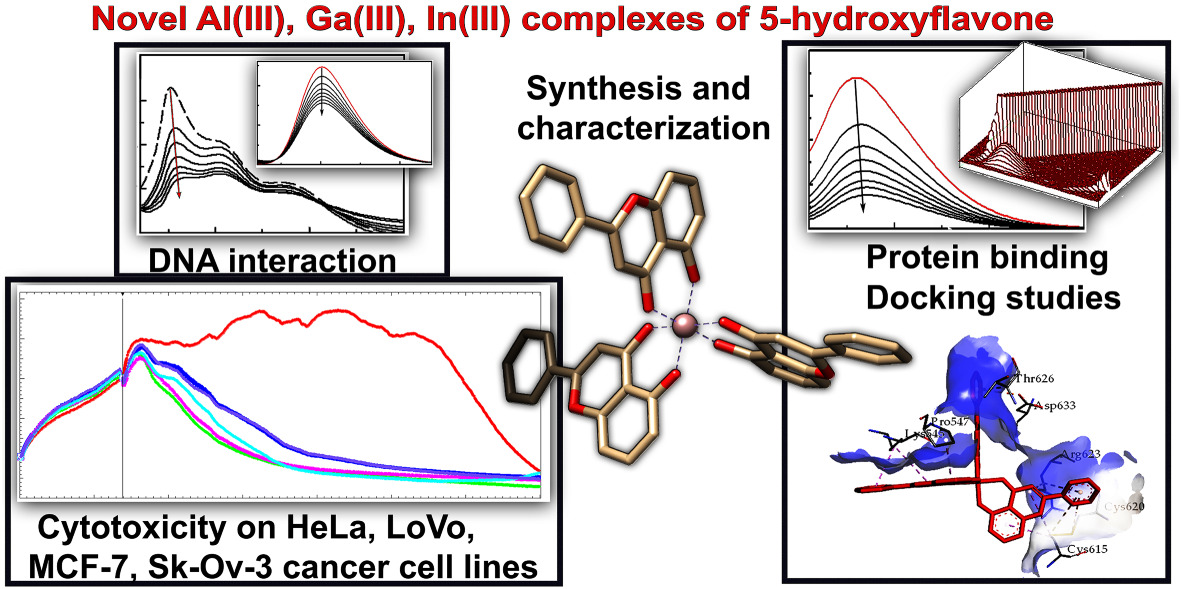
We report the synthesis of three new complexes of the natural flavonoid 5-hydroxyflavone (primuletin) and Al (III), Ga (III), In (III) with the general chemical formula of [M(C15H9O3)3] · nH2O. Characterization of the complexes employed elemental, thermogravimetric analysis, molar conductance, FT-IR, UV–Vis, mass spectra, DFT calculations. Al (III) enhances, while Ga (III) and In (III) decrease the cytotoxicity of the ligand. As a means to investigate the mechanism underlying the cytotoxic effects, interactions with calf thymus DNA, serum albumin and transferrin were also carried out.
Synthesis and Characterization of VO2+, Co2+, Ni2+, Cu2+ and Zn2+ Complexes of a Schiff base ligand derived from ethyl 2-amino-6-ethyl-4,5,6,7-tetrahydrothieno[2,3-c]pyridine-3-carboxylate and their Investigation as fungicide Agents
- First Published: 09 October 2018
![Synthesis and Characterization of VO2+, Co2+, Ni2+, Cu2+ and Zn2+ Complexes of a Schiff base ligand derived from ethyl 2-amino-6-ethyl-4,5,6,7-tetrahydrothieno[2,3-c]pyridine-3-carboxylate and their Investigation as fungicide Agents](/cms/asset/db7a651f-2961-4769-b1a1-0aedfdbf2763/aoc4581-toc-0001-m.jpg)
VO2+, Cu2+, Ni2+, Co2+, and Zn2+ Complexes of ethyl (E)-6-ethyl-2-((2-hydroxy benzylidene)amino)-4,5,6,7-tetrahydrothieno[2,3-c]pyridine-3-carboxylate were synthesized and characterized via different spectroscopic techniques and its fungicide activity against A. niger, A. Flavus, S. cereuisire and C. albican was examined by Well diffusion method.
Synthesis and structure of arene ruthenium(II) complexes: One-pot catalytic approach to synthesis of bioactive quinolines under mild conditions
- First Published: 03 October 2018
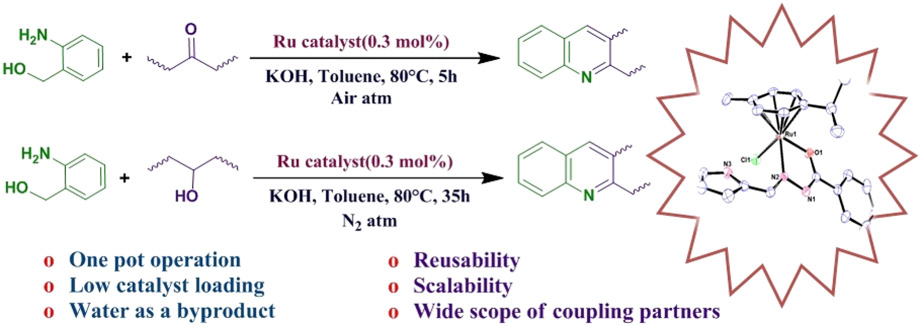
A one-pot efficient catalytic synthesis of quinolines using new Ru(II) half-sandwich complexes under mild conditions is described. The synthesized complexes exhibit excellent catalytic activity towards the coupling of 2-amino alcohol with functionalized ketones and secondary alcohols in the optimal conditions and afforded the corresponding quinolines in isolated yields of up to 97% using 0.3 mol% of catalyst loading for 5 h.
Synthesis, structure, antiproliferative activity and molecular docking of divalent and trivalent metal complexes of 4H-3,5-diamino-1,2,4-triazole and α-hydroxynaphthaldehyde Schiff base ligand
- First Published: 08 October 2018
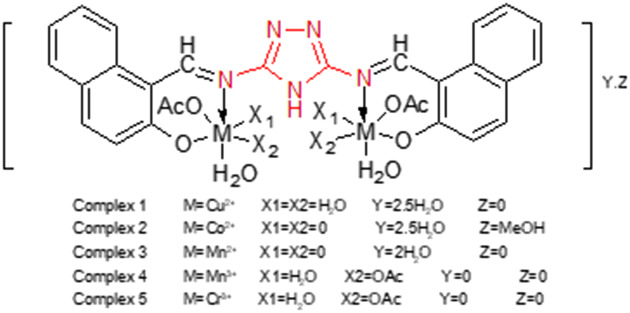
Cu(II), Co(II), Mn(II), Cr(III) and Mn(III) complexes of a Schiff base ligand have been synthesized and characterized. Molecular docking and binding energy calculations of the ligand with H-ras (121p) indicated that the ligand is an efficient inhibitor of liver and breast cancer. The antitumor activities of the ligand and its complexes were evaluated against the two cancer cell lines HepG2 and MCF-7 and compared with that of the well-known anticancer drug cisplatin.
Application of a novel, efficient and recyclable photo redox catalyst (Zn–Al layered double hydroxide/eosin) for the synthesis of substituted pyridine derivatives under visible light irradiation
- First Published: 09 October 2018
Synthesis, spectroscopic characterization, x-ray crystal structures, thermal behavior and antimicrobial activity of copper(II) complexes with the novel (3,5-dimethyl-1H-pyrazol-1-yl)(morpholin-4-yl)methanethione
- First Published: 27 September 2018
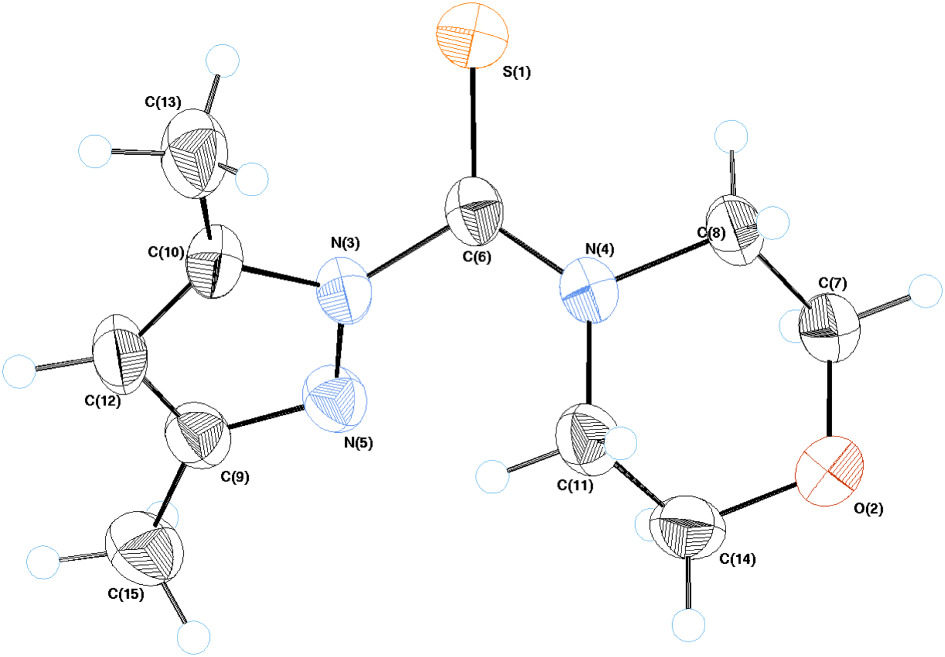
The novel (3,5-dimethyl-1H-pyrazol-1-yl)(morpholin-4-yl) methanethione ligand (L) and its copper(II) chelates have been prepared and investigated by several physico-chemical techniques. The molecular structures of the ligand as well as two Cu(II) complexes have been characterized by x-ray single crystal diffraction. The ligand (L) behaves as a bidentate NS chelating agent. The complexes displayed antimicrobial activity against various pathogenic bacteria and fungi higher than that of the free organic ligand.
Non-hydrocracking of diesel over hierarchical hzsm-5 zeolite to produce gasoline
- First Published: 27 September 2018
Preparation and characterization of magnetic theranostic nanoparticles for curcumin delivery and evaluation as MRI contrast agent
- First Published: 03 October 2018
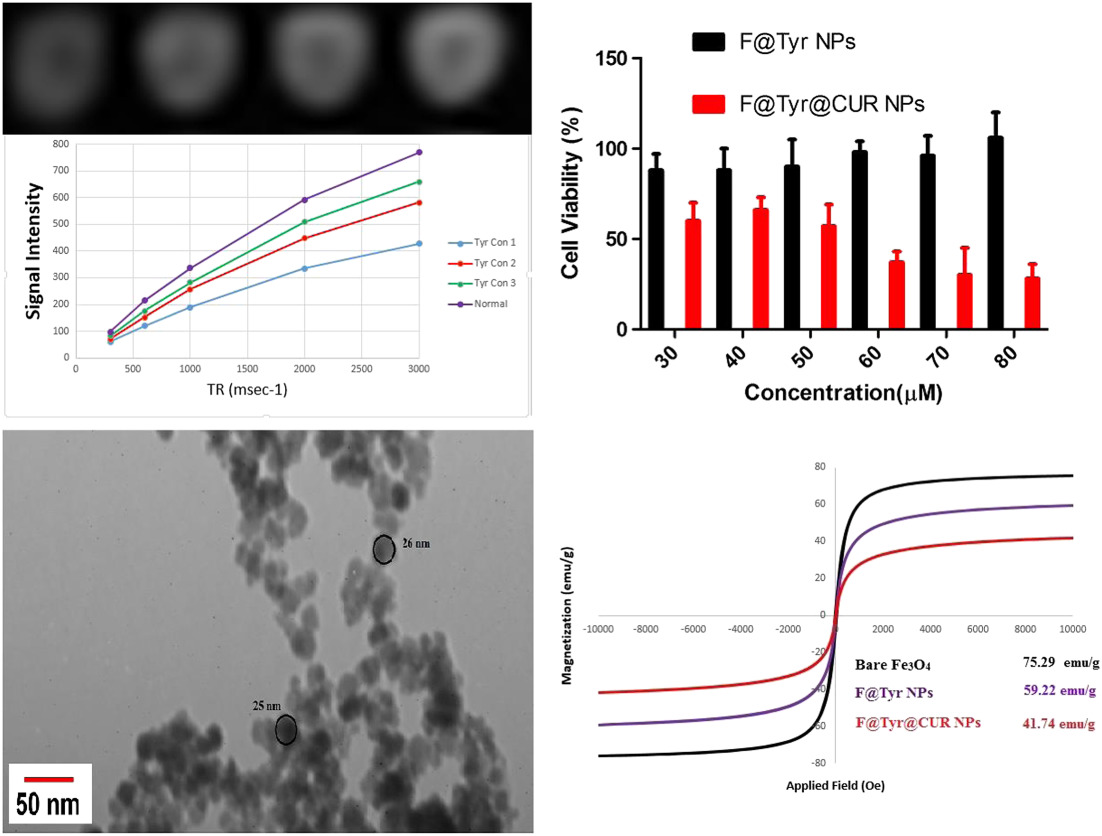
We have identified and developed a biocompatible drug delivery system (F@Tyr NPs), which could be used to delivery of chemotherapeutic agents such as CUR. Also, the MRI study demonstrated the effectiveness of Fe3O4 nanoparticles as contrast agent for the early detection of tumor as evidenced from the phantom images as well as higher T2 relaxivity.
Copper-vitamin B6 coated on maghemite nanoparticles: A new convenient dual catalysis system to synthesize α-aminonitriles from benzyl alcohols
- First Published: 03 October 2018
New organometallic complex supported on mesoporous silica and its enzymes activity inhibition properties
- First Published: 01 October 2018
Hofmann N-alkylation of aniline derivatives with alcohols using ferric perchlorate immobilized on SiO2 as a catalyst through Box–Behnken experimental design
- First Published: 30 October 2018
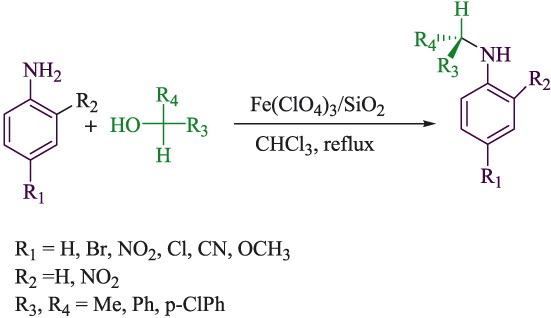
An efficient method for the N-alkylation of poorly nucleophilic amines using ferric perchlorate immobilized on SiO2 as a catalyst is described. Ferric perchlorate adsorbed on silica gel (Fe(ClO4)3/SiO2) is an efficient and selective catalyst for the N-alkylation of aromatic amines with alcohols to provide alkylated amines.
Green and efficient organic–inorganic hybrid nanocatalyst for oxidative desulfurization of gasoline
- First Published: 03 October 2018
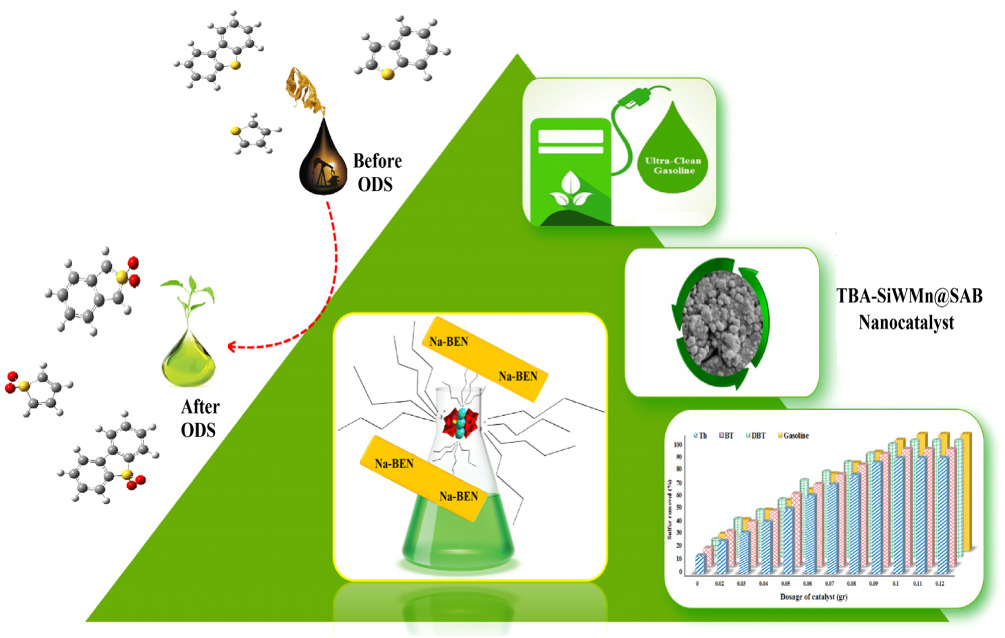
A new organic–inorganic hybrid nanocomposite (TBA-Si2W18Mn4@SAB) was synthesized by supporting quaternary ammonium salt of sandwich-type polyoxometalate (TBA-Si2W18Mn4) on sodium-activated bentonite (SAB) for catalysing an oxidative desulfurization (ODS) process. The removal of the sulfur content of gasoline reached 97% at a temperature of 35°C after 1 h using 0.10 g of the prepared catalyst. The use of the TBA-Si2W18Mn4@SAB/CH3COOH/H2O2 oxidation system could be a convenient strategy for reducing the sulfur content of gasoline fuel under moderate reaction conditions.
Green synthesis and characterization of palladium nanoparticles supported on zeolite Y by sonochemical method, powerful and efficient catalyst for Suzuki-Miyaura coupling of aryl halides with phenylboronic acid
- First Published: 09 October 2018
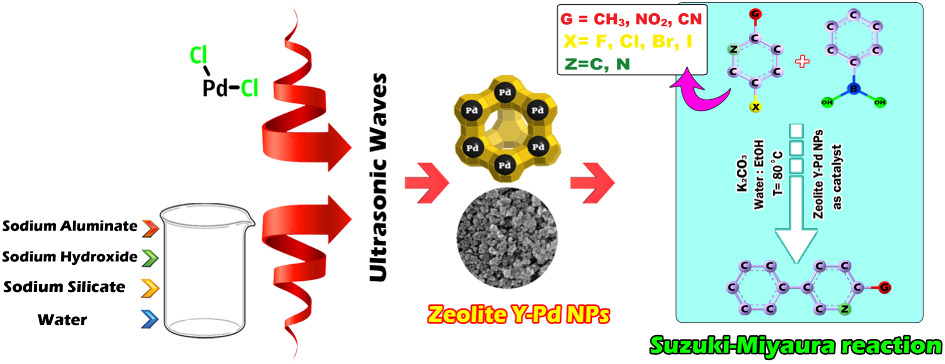
Zeolite Y-Palladium nanoparticles were prepared by using ultrasonic irradiation and used as a catalyst in Suzuki-Miyaura reactions. This catalyst has high performance in Suzuki-Miyaura coupling of aryl halides (Ar-X, X = I, Br, Cl, F) with phenylboronic acid. The advantages of using this catalyst are green solvent, short reaction time, high yields, ligandless and recyclable.
Ionic liquid-assisted synthesis of porous BiOBr microspheres with enhanced visible light photocatalytic performance
- First Published: 09 October 2018
Enhanced dechlorination of 2,4-dichlorophenoxyacetic acid by Pd/Fe nanoparticles in the presence of environment-friendly iminodisuccinic acid
- First Published: 08 October 2018
Growth Inhibition of Microcystis aeruginosa by Copper-based MOFs: Performance and Physiological Effect on Algal Cells
- First Published: 03 October 2018
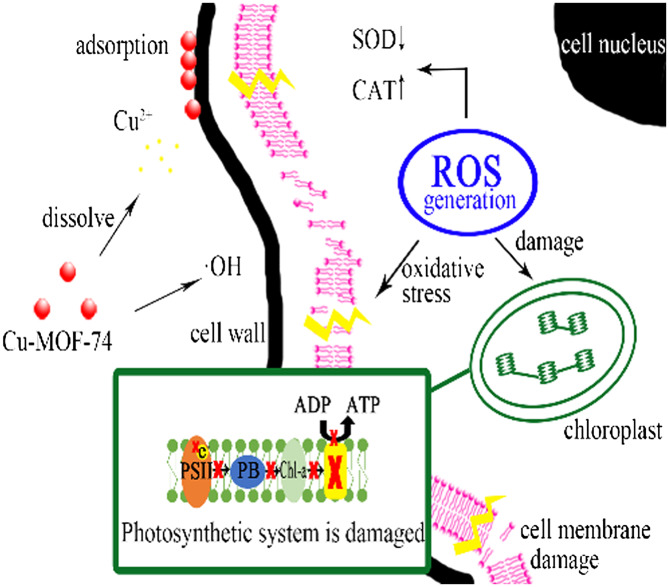
Growth inhibition effect on photosynthetic microbes by copper-based MOFs that have been synthesized using a facile hydrothermal method was evaluated. Its show promising inhibition efficiency and have influence on algal physiological characteristics. The inhibition mechanism on algae by Cu-based MOFs was proposed.
Coordination behaviour and biological activity studies involving theoretical docking of bis-Schiff base ligand and some of its transition metal complexes
- First Published: 18 October 2018
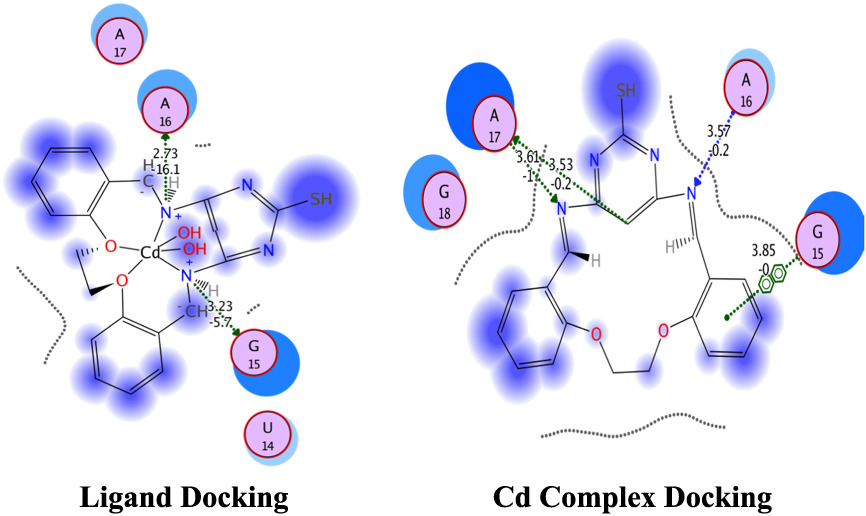
A novel bis-Schiff base ligand, 1,2-bis(2-vinylphenoxy)ethane-4,6-diaminopyrimidine-2-thiol, was prepared. Coordination compounds of this Schiff base with transition metal cations Cd(II), Zn(II), Ni(II), Co(II), Mn(II), Cu(II) and Fe(III) were synthesized and characterized. Their biological activities were experimentally determined and confirmed using theoretical molecular docking.
Cobalt(II)-based ethylene dimerization catalysts with silicon-bridged diphosphine ligands
- First Published: 09 October 2018
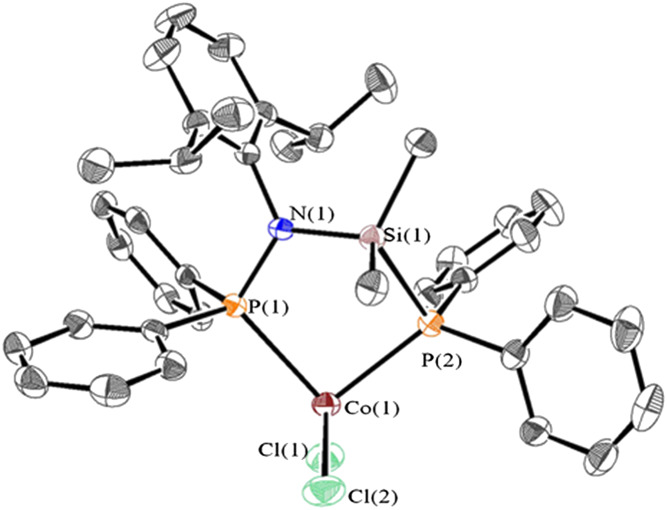
A series of silicon-bridged diphosphine cobalt complexes were synthesized and characterized, which present selectivity towards ethylene dimerization, combined with DMAO/AlEt3. Single-crystal X-ray diffraction data indicated a monomeric structure with κ2 coordination of the silicon-bridged diphosphine ligand to the cobalt center. Cobalt complex C1 exhibited moderate catalytic activity of 2.3 × 105 g (molCo)−1 h−1, with 100% selectivity towards C4 (87% 1-C4 in the C4 fraction).
4-(4-Propylpiperazine-1-yl)butane-1-sulfonic acid-modified silica-coated magnetic nanoparticles: A novel and recyclable catalyst for the synthesis of 5-arylidinebarbituric acids and pyrano[2,3-d]pyrimidinedione derivatives in aqueous media
- First Published: 09 October 2018
![4-(4-Propylpiperazine-1-yl)butane-1-sulfonic acid-modified silica-coated magnetic nanoparticles: A novel and recyclable catalyst for the synthesis of 5-arylidinebarbituric acids and pyrano[2,3-d]pyrimidinedione derivatives in aqueous media](/cms/asset/f8006b61-b110-4bf2-bb5e-05dfa1e49be5/aoc4605-toc-0001-m.jpg)
A mild, simple and efficient procedure for the preparation of barbituric acid and pyrano[2,3-d]pyrimidine derivatives in aqueous media is described using 4-(4-propylpiperazine-1-yl)butane-1-sulfonic acid-modified silica-coated magnetic nanoparticles as a novel and reusable catalyst. The catalyst was easily isolated from the reaction mixture by magnetic decantation and reused at least eight times without significant degradation in activity.
Nano-synthesis, characterization, modeling and molecular docking analysis of Mn (II), Co (II), Cr (III) and Cu (II) complexes with azo pyrazolone ligand as new favorable antimicrobial and antitumor agents
- First Published: 18 October 2018
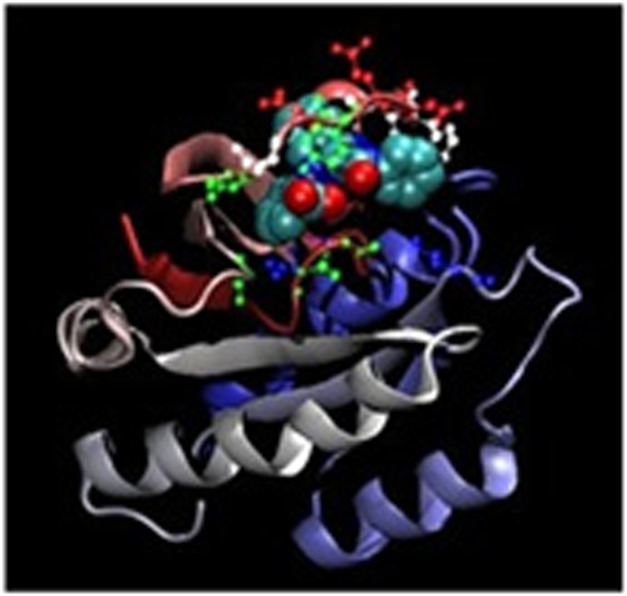
Novel Mn (II), Co (II), Cr (III) and Cu (II) complexes have been synthesized with azopyrazolone ligand, HL. Their structures were assigned depending on the elemental, thermal and spectral analyses, as well as conductivity and magnetic moment measurements. The XRD results uniquely confirmed the crystalline nature and nano-sized particles of Cu (II) complex. The tested compounds showed a reasonable antibacterial activity and weak antitumor efficacy. The in vitro results were confirmed by the in silico molecular docking analysis (docking server).
Fabrication of mixed phase calcium ferrite and zirconia nanocomposite for abatement of methyl orange dye from aqua matrix: Optimization of process parameters
- First Published: 03 October 2018
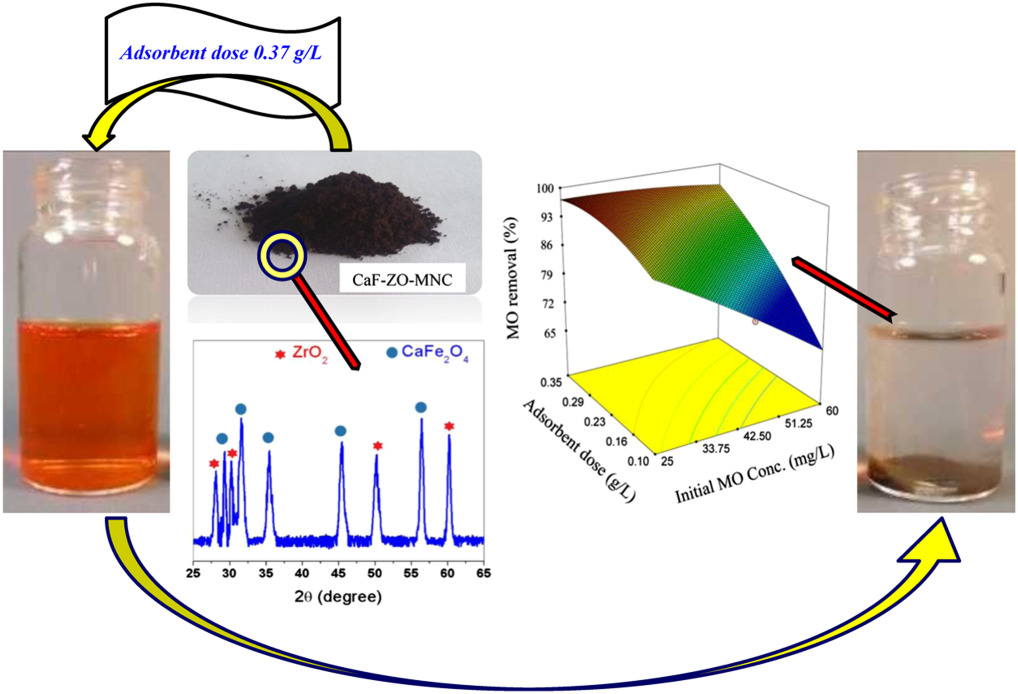
This study reported thefacile fabrication of novel mixed phase calcium ferrite and zirconia nanocomposite. Coexistence of calciumferrite and zirconia nanoparticles enhanced the adsorptive performance of the composite. The RSMoptimization revealed maximum MO dye removal of 99.11% at optimum experimental conditions.
The β-cyclodextrin decorated with palladium nanoparticles without pretreatment: An efficient heterogeneous catalyst for biaryls synthesis
- First Published: 11 October 2018
Synthesis, characterization and biological evaluation of a nanorod five-coordinated Sn(IV) complex. Theoretical studies of (CH3)2Sn(O2PPh2)2
- First Published: 09 October 2018
Experimental and computational exploration of photophysical and electroluminescent properties of modified 2,2′:6′,2″-terpyridine, 2,6-di(thiazol-2-yl)pyridine and 2,6-di(pyrazin-2-yl)pyridine ligands and their Re(I) complexes
- First Published: 09 October 2018
Half sandwich based rhodamine - hydrazone single molecule probe: Light responsive, metal sensing and imaging properties
- First Published: 09 October 2018
A new potassium-based coordination polymer with hydrogen bonding and zigzag metallophilic interactions
- First Published: 09 October 2018
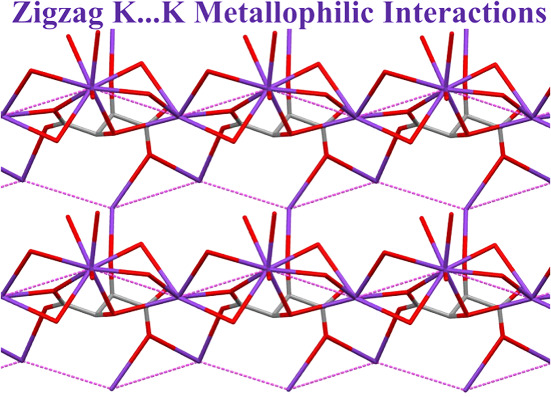
A new potassium-based CP with zigzag K···K metallophilic interactions has been synthesized and structurally characterized. A widespread hydrogen bonding network in 3D structure of it was observed. The effects of concentration, ultrasonic irradiation and type of the solvents on morphology and thermal behavior of it was investigated.
Syntheses, structural characterizations, and electrochemical and fluorescent properties of homo- and hetero-polynuclear transition metal(II) complexes
- First Published: 18 October 2018

Rare homo- and hetero-polynuclear transition metal(II) complexes, [{Cu(L1)}2] (1) and [Cu(L2)Ni2(CH3OH)2] (2), were prepared and characterized. Complex 1 possesses an uncommon dinuclear structure bonded by two alkoxy bridges. Complex 2 exhibits an unexpected trinuclear heterobimetallic structure from two chelating (L2)3− units in crossover mode. Fluorescence behaviors of 1 and 2 were investigated, and electrochemical experiments revealed that electrolytic redox reactions of 1 are irreversible processes.
Facile synthesis of copper hexacyanoferrate/graphene nanocomposite for electrochemical energy storage
- First Published: 18 October 2018
Biological evaluation of rare earth complexes bearing 1H-imidazo[4,5-f]-1,10-phenanthroline moiety as promising anticancer chemotherapeutics
- First Published: 24 October 2018
![Biological evaluation of rare earth complexes bearing 1H-imidazo[4,5-f]-1,10-phenanthroline moiety as promising anticancer chemotherapeutics](/cms/asset/0bd220d7-edd6-451d-b8a3-8c6b7736d2c1/aoc4617-toc-0001-m.jpg)
Six lanthanide(III) complexes with the 2-(naphthalen-1-yl)-1H-imidazo[4,5-f]-1,10-phenanthroline ligand have been synthesized and characterized. Low IC50 values of these complexes were measured with three human cancer cell lines. Complex 5 could induce BEL-7404 cancer cell apoptosis via the extrinsic pathway with high expression of caspase-8, resulting in caspase-3 activation. Furthermore, complex 5 could significantly suppress BEL-7404 cell proliferation via induced apoptosis with G2/M phase cell cycle.
COMMUNICATIONS
Recyclable cellulose nanocrystal supported Palladium nanoparticles as an efficient heterogeneous catalyst for the solvent-free synthesis of coumarin derivatives via von Pechmann condensation
- First Published: 07 October 2018

Preparation and characterization of palladium nanoparticles dispersed on the surface of 2-amino pyrimidine functionalized-cellulose nanocrystals as a novel, efficient and reusable heterogeneous nanocatalysts (CNC-AMPD-Pd) performed and then the prepared nanocatalyst applied successfully for the Pechmann reactions of different substituted phenols and ethyl acetoacetate to synthesize of various coumarin derivatives. The recovered catalyst reused in four successive runs with only a slight loss of activity.
Chemoselective hydrogenation of nitriles to secondary or tertiary amines catalyzed by aqueous-phase catalysts supported on hexagonal mesoporous silica
- First Published: 06 September 2018
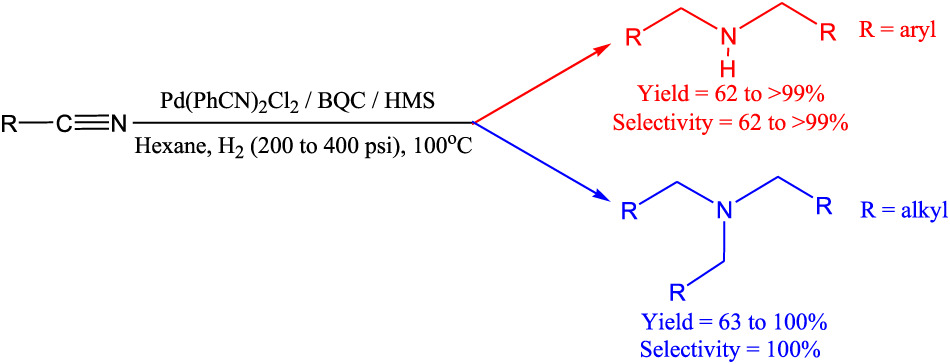
The first supported aqueous-phase catalyst for the hydrogenation of nitriles is revealed. The catalyst prepared from Pd(PhCN)2Cl2, water soluble ligand 2,2'-biquinoline-4,4'-dicarboxylic acid dipotassium salt and mesoporous silica is a highly efficient catalyst for the selective formation of secondary or tertiary amines respectively from aromatic or aliphatic nitriles. The catalytic system is stable and can be recycled and reused without loss of activity and selectivity. The catalyst is easily prepared and is highly active under moderate operational conditions.
Synthesis and characterization of a Mn-Schiff base complex anchored on modified MCM-41 as a novel and recyclable catalyst for oxidation of olefins
- First Published: 07 October 2018
Fabrication of noble-metal-free g-C3N4-MIL-53(Fe) composite for enhanced photocatalytic H2-generation performance
- First Published: 03 October 2018




